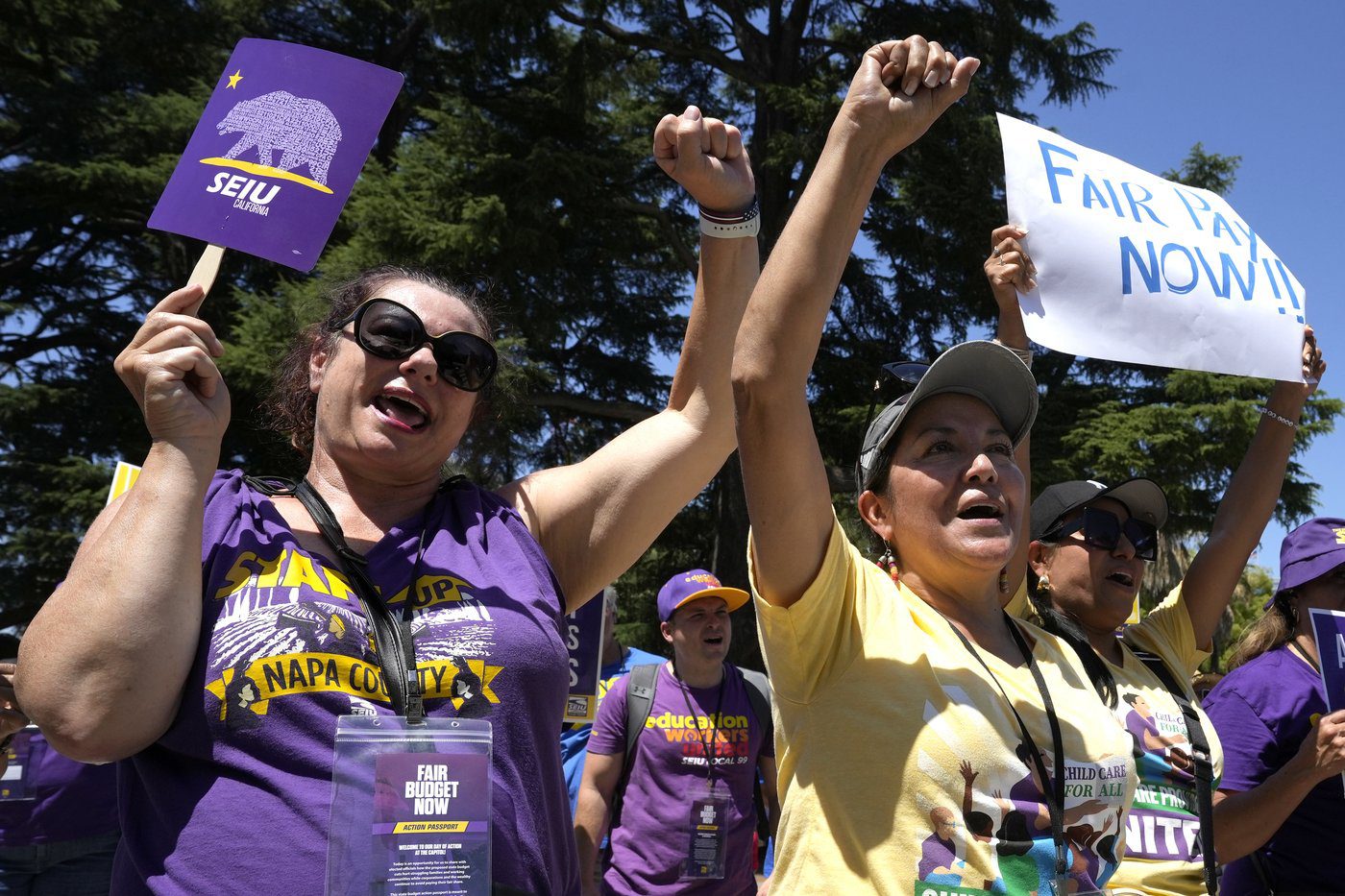SACRAMENTO, Calif. (AP) — The California Legislature on Thursday rejected many of Gov. Gavin Newsom’s most difficult budget cuts, choosing instead to speed-up a temporary tax increase on some businesses to help pay off an estimated $45 billion deficit while preserving spending on many social safety net programs.
Thursday’s vote was not really a public rebuke of Newsom, a Democrat who for the most part has had a good relationship with a Legislature dominated by members of his own party. Lawmakers had to pass a balanced budget before Saturday in order to keep getting paid while negotiations on a final spending plan continue.
Instead, the Legislature’s proposal outlines the differences between Newsom, a second-term governor who many believe holds presidential aspirations, and a liberal state Legislature that is often more willing to take risks.
While Newsom’s budget proposal preserved most of the state’s major assistance programs, he included a number of smaller cuts that angered his Democratic allies. He proposed to stop paying for in-home caretakers for some disabled immigrants on Medicaid. He wants to eliminate a program that helps provide housing for families with incomes less than $13,000 per year. And he suggested delaying a rate increase for organizations that care for people with intellectual disabilities.
To reject these cuts, lawmakers needed to find more money. They found it by taking one of Newsom’s ideas and making it happen faster.
Newsom proposed temporarily stopping some businesses from deducting financial losses from their state taxable income, thus increasing their tax bill. It has become a common way to increase revenue during budget shortfalls. The Legislature chose to do this, too, but their plan would start the tax increase one year earlier. That generated an extra $5 billion in revenue compared with Newsom’s plan.
Lawmakers also found large budget cuts in other places. They want to cut $1 billion out of the state’s prison budget, arguing the money isn’t needed now that the prison population is about half of what it was two decades ago. And they want to cancel a $400 million loan to PG&E that would help extend the life of the Diablo Canyon nuclear power plant.
One major issue that has yet to be addressed by either side is what to do about a minimum wage increase for health care workers that is scheduled to start on July 1. Newsom signed a law last year that would eventually raise health care workers’ minimum wage to $25 per hour over the next decade.
The wage increase is expected to cost the state hundreds of millions of dollars in increased wages for some state workers and increased payments in the state’s Medicaid program, according to an analysis by the University of California-Berkeley Labor Center. Newsom has said he wants to delay the minimum wage increase, but he so far has been unable to get an agreement from the state Legislature.
Republicans, who don’t have enough numbers to sway policy decisions and say they were left out of the budget negotiations with Democrats, criticized the Legislature’s spending plan as unsustainable. Republican state Sen. Kelly Seyarto accused Democrats of “divesting” from the state’s prison system “instead of fixing it and creating a system that works for all of us.” And Republican state Sen. Roger Niello said it was dangerous for Democrats to assume the state would collect more revenue next year than what the Legislative Analyst’s Office had projected.
“One of the easiest ways to balance a public sector budget is just to assume more revenue and you don’t have to deal with that until the year is over,” he said. “This budget is balanced nominally. But it is not sustainable.”
Democratic state Sen. Scott Wiener said the Legislature’s budget is a plan “we can all be proud of.” He defended the budget cut for prisons, saying “it is absolutely absurd that we have reduced our prison population by 50% and yet we’re spending more on prisons.”
“We can have accountability for committing crimes without going back to mass incarceration,” he said.
Adam Beam, The Associated Press








